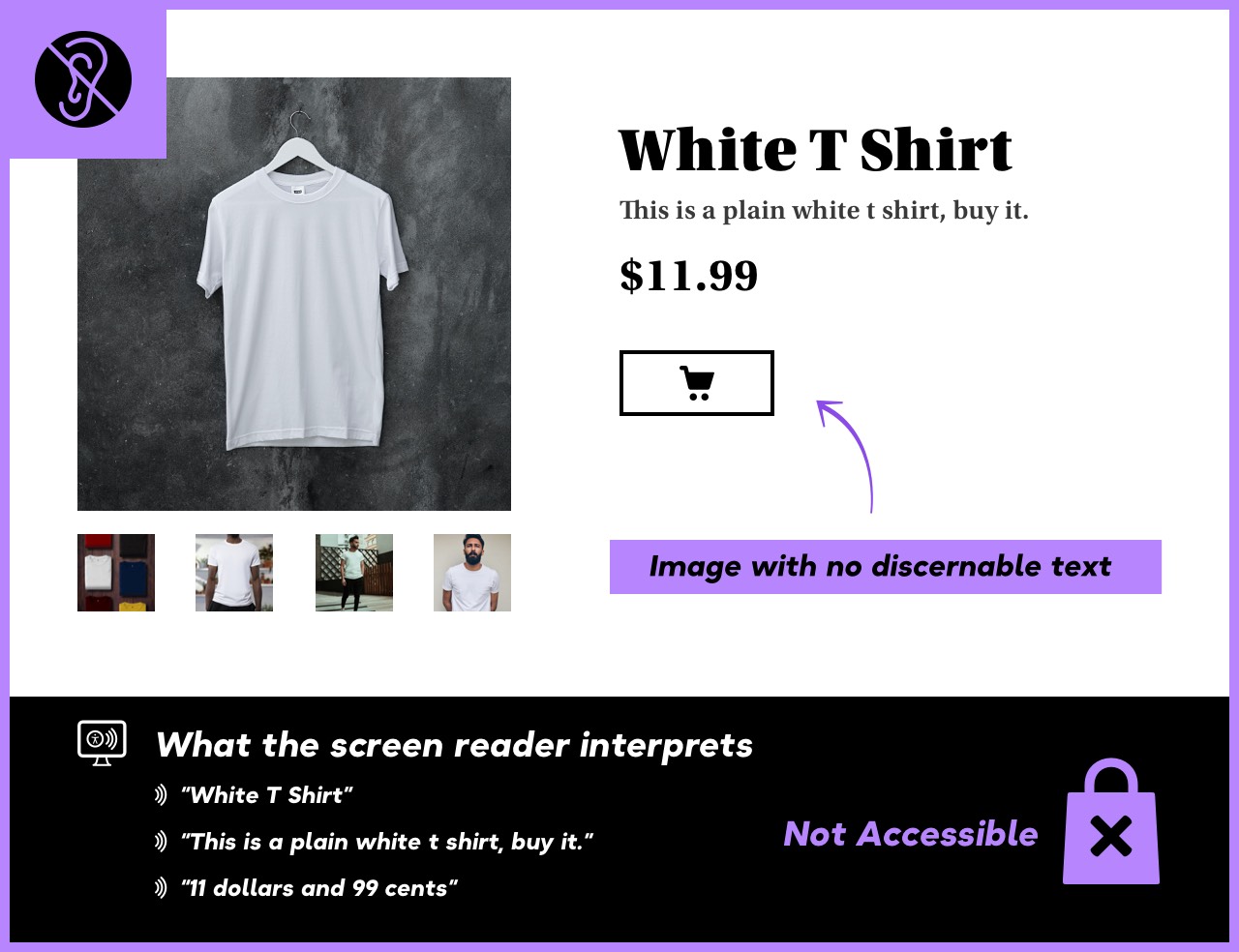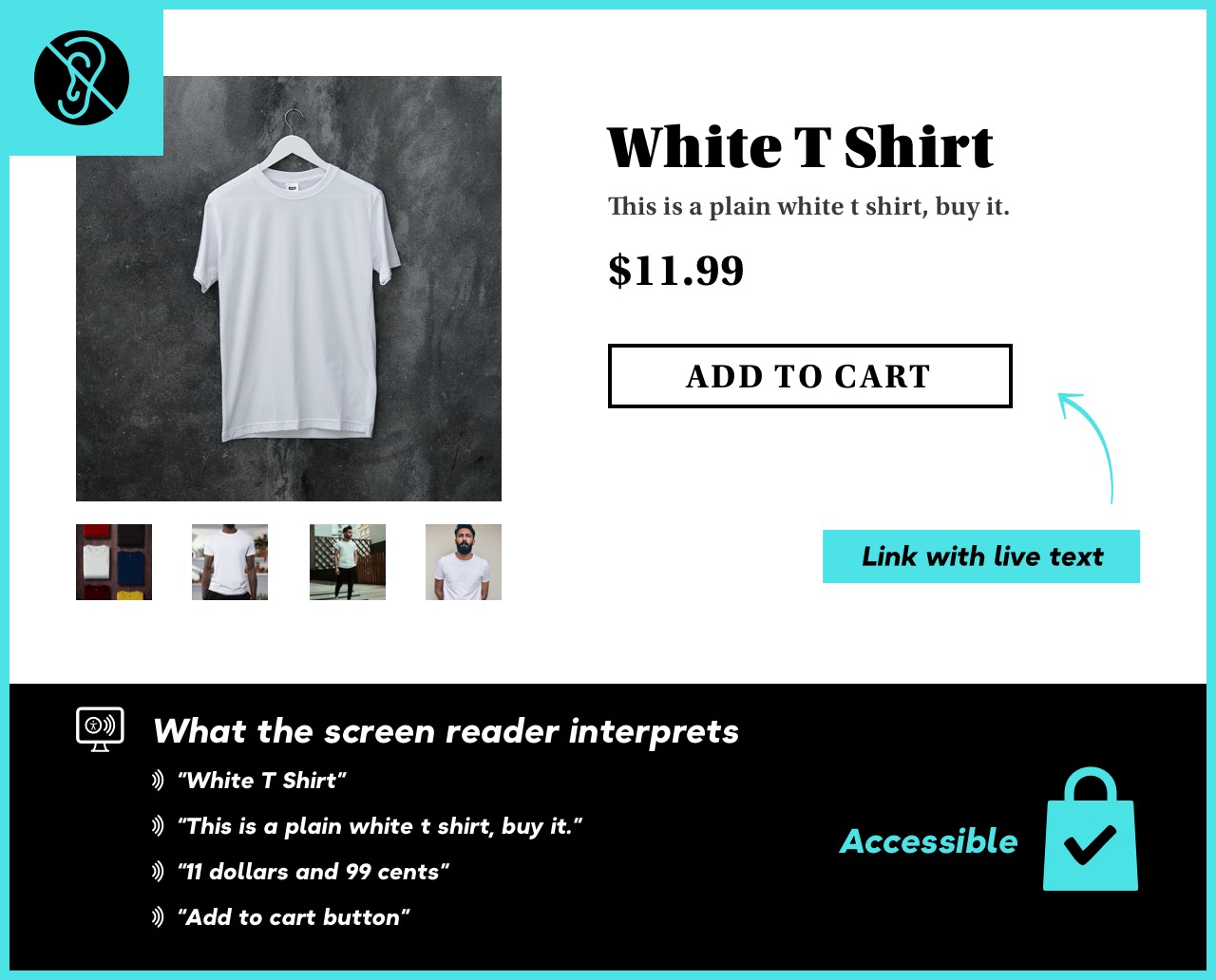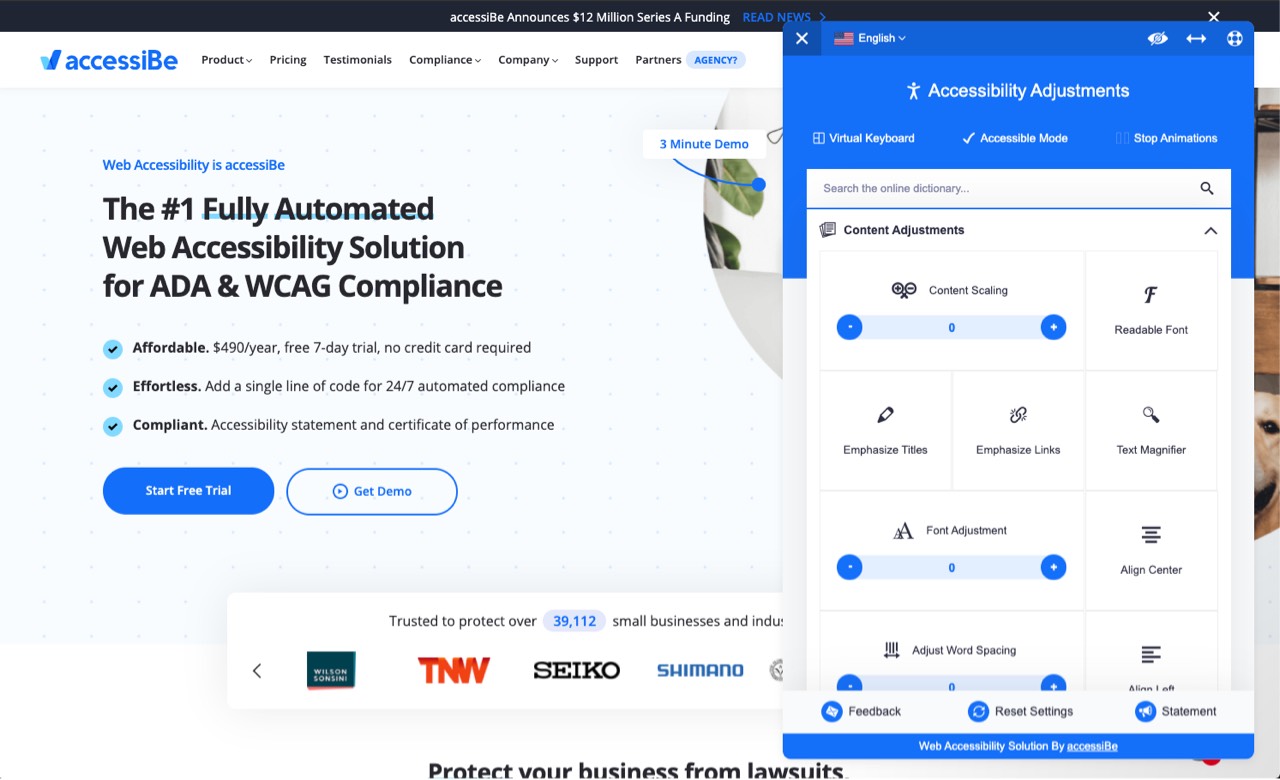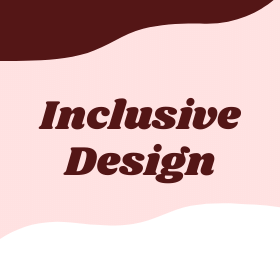What is inclusive design?
Many people are unfamiliar with the term "inclusive design," it's a term you don't hear very often during the process of creating a new website. So, what is it?
"The design of mainstream products and/or services that are accessible to, and usable by as many people as reasonably possible … without the need for special adaptation or specialized design." — The British Standards Institute (2005)
Basically, inclusive design is accounting for all people with any kind of disability to be able to use your website or software with no major “roadblocks.” An example of a roadblock would be an “add to cart” button on an ecommerce website that uses an image for the button, no alt text and no discernible link text. This assumes that every user has enough vision to read and understand the button, when in reality some people with visual impairment will be left stuck, not knowing how to add their item to their cart.


While getting more popular, totally inclusive design is still extremely rare in the world wide web today. Why is this? Let's look at a few reasons:
- It's time consuming — Inclusive design requires extra care and attention to detail during the design process. It can also require additional user feedback to ensure maximum usability.
- It's confusing — Take it from someone who has read all of the WGAC 2.1 guidelines, it can get confusing and frustrating trying to design and build things that are completely compliant and inclusiveness. Not everything is cut and dry.
- It's expensive - Because of the two reasons above, this means a lot of extra hours designing and developing. This is one of the core reasons you don't see smaller business and organizations practicing perfect inclusiveness, the budget and resources are simply not there.
Why do we need inclusive design?
If all of this is true, why do we need to worry about inclusive design? Does it really affect that many people?
Well the facts are that hundreds of millions of people in the world suffer from some sort of disability that would hinder them from using the internet in the same way as a completely healthy person. Here are some of the most common web accessibility disabilities:
- Vision impaired or blindness — People who are blind or visually impaired depend on a screen reader to read them the content of web pages. This means if your website is not properly setup, a visually impaired person would not be able to properly use your site.
- Hearing impaired or deaf — If your website includes a lot video interaction and does not include proper transcripts, this can be very problematic for people with hearing disabilities.
- Motion Sensitivity — Believe it or not, motion sensitivity is a real impairment in today's web space. With more and more interactive sites, some of the more extreme motion graphics can cause major problems for people with motion sensitivity.
There are several more disabilities that would hinder somebody from properly using your website, but disabilities aren't the only reason you may want to consider incorporating inclusive design. There are also other factors that could make your website inaccessible to a person. These reasons would include:
- An older person with varying abilities.
- Temporary disabilities (broken hand, eye injury, etc.)
- Situations where someone may not be able to see their screen well or cannot play audio.
- Bad or expensive internet connection.
So, what's the solution?
Now that we know inclusive design is necessary, but not easily feasible what's the solution? Is there a solution? Some companies have tried to take on this issue by offering all-in-one solutions for accessibility, like accessiBe. They use AI and other tools to make your site accessible and even give users the control to determine how accessible certain aspects of the site should be (font size, colors, keyboard, etc.) They offer all of this for a pretty reasonable price.

Still, even with software like accessiBe surfacing, it will still probably be a long time (if ever) before the internet is mostly accessible. Most likely, it will be a gradual movement towards accessibility in websites that aren't required by law to be completely accessible.
Here at JH Speciality, we offer a wide variety of options to make your site more usable, and have been improving year over year to make sites that reflect this.
Additional ADA Compliance Reading
8 Simple Ways to Make Your Social Media #Accessible




